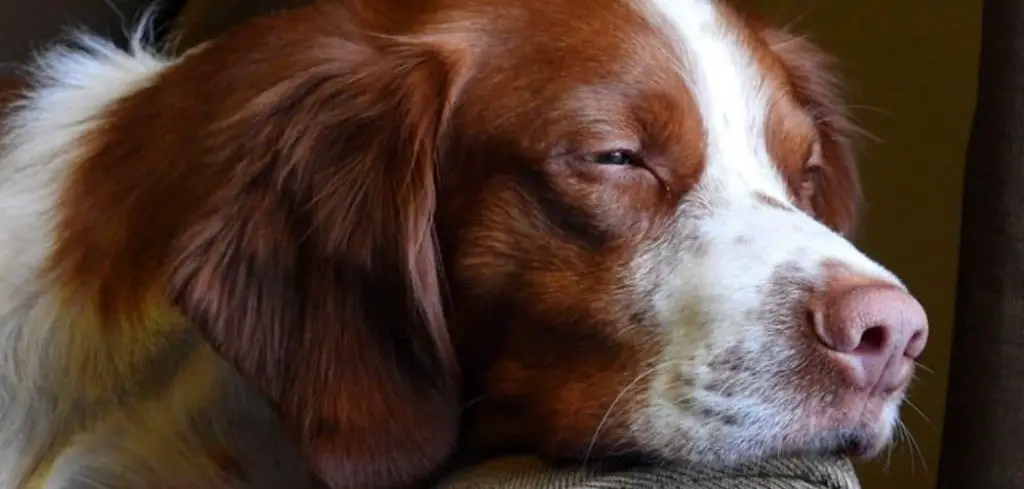It can be confusing and concerning to see your male dog acting strangely — especially if he’s refusing food and showing signs of being in heat.
While only female dogs technically go into heat, male dogs can experience intense behavioral and physical changes when nearby females are in heat. One of those changes may be a sudden lack of appetite.
We outline the common causes of my male dog is in heat and not eating, what you can do at home, and when to seek veterinary help.
Male Dog Is in Heat and Not Eating — Why It Happens
When a male dog is around a female in heat, his body can respond in powerful ways. Hormones surge, instincts kick in, and normal behavior like eating often takes a back seat. While the term “in heat” technically applies to females, male dogs show intense responses to estrus cues — pacing, whining, mounting, and yes, skipping meals.
Other medical conditions, stress factors, or illnesses can also cause a male dog to stop eating. So while hormones may be the culprit, it’s important to consider and rule out other issues too.

Male Dog Is in Heat and Not Eating: Common Causes
Female in Heat Nearby
When a nearby female enters estrus, male dogs often experience behavioral and hormonal changes.
Their sense of smell is so powerful they can detect a female in heat from miles away.
This causes extreme excitement and restlessness. Many males become fixated on mating behavior and lose interest in food.
They may whine, pace, try to escape, or become territorial.
Read more: My Dog is bleeding from her private area and not eating (What it means)
Stress and Anxiety
Sexual frustration or the inability to reach a female in heat can lead to high levels of stress.
This anxiety is often accompanied by appetite suppression. You may also notice trembling, barking, aggression, or a decrease in social interaction.
Dogs overwhelmed by sexual instinct and blocked access may become visibly distressed.
Gastric Upset or Illness
Don’t assume hormones are always the reason for a male dog not eating.
Gastrointestinal issues like gas, nausea, pancreatitis, or intestinal parasites can also reduce appetite.
If your dog is vomiting, has diarrhea, or shows abdominal discomfort, the lack of eating might be related to something more serious.
Pain or Discomfort
Dental pain, arthritis, or internal injuries may reduce a dog’s willingness to eat. This is especially true in older males or dogs with underlying health issues.
If your dog is favoring one side, vocalizing when touched, or has trouble moving, pain could be contributing to their loss of appetite.
Hormonal Imbalance or Testicular Issues
In rare cases, intact male dogs can develop conditions like testicular tumors or hypersexuality syndrome.
These disorders may present with symptoms like extreme sexual behavior, lethargy, swelling, or appetite changes.
If your dog is persistently obsessed with mounting or has changes in his scrotal area, a vet visit is warranted.
What to Do If Your Dog Is in Heat and Not Eating
Try to reduce your male dog’s exposure to in-heat females. If possible, limit walks or yard time when females nearby are cycling.
Block views, close windows, and use calming aids like pheromone diffusers to reduce arousal and stress.
Offer highly palatable foods to entice eating. Warm meals, wet food toppers, or boiled chicken and rice may help stimulate appetite.
Make meals quiet and stress-free. Avoid punishing or forcing food.
Ensure hydration. Some dogs will drink even if they aren’t eating. If your dog isn’t drinking either, this is more concerning.
Exercise and mental enrichment can help reduce stress and distract your dog.
Puzzle toys, long walks away from triggering areas, and obedience games may help reset his focus.
If your dog remains uninterested in food for more than 24–48 hours, consult your veterinarian to rule out illness.
When to Call or Visit Your Vet
If your male dog hasn’t eaten in over 48 hours, it’s time to consult a vet — especially if no female in heat is nearby.
Other warning signs include:
Vomiting or diarrhea
Swollen testicles or penile discharge
Lethargy or collapse
Excessive drooling or retching
Painful abdomen
Sudden aggression or confusion
Your vet may conduct an exam, bloodwork, or ultrasound to determine if the cause is behavioral, hormonal, or medical.
Read more: Dog Heaving and Not Eating (When it becomes dangerous)
Key Takeaway
It’s normal for male dogs to become obsessed with females in heat, sometimes to the point of refusing food. But don’t ignore prolonged anorexia or signs of illness.
Keep your dog calm, reduce stimulation, and contact your vet if he doesn’t improve.
Understanding hormonal behavior helps — but don’t rule out medical causes without a check-up.
A healthy male dog should bounce back quickly. If not, trust your instincts and seek veterinary support.
